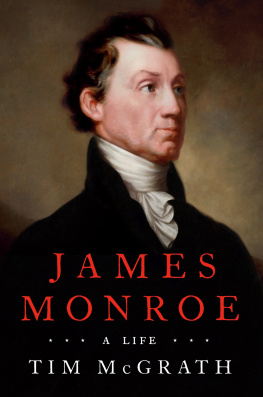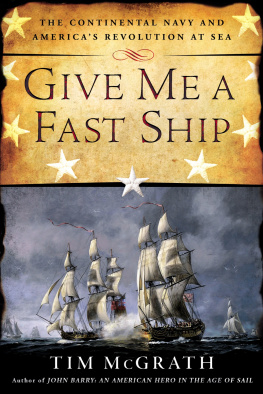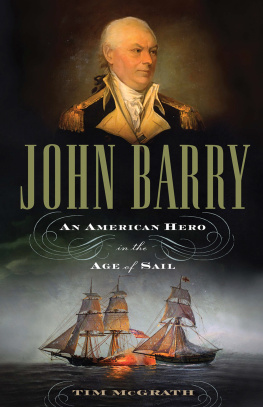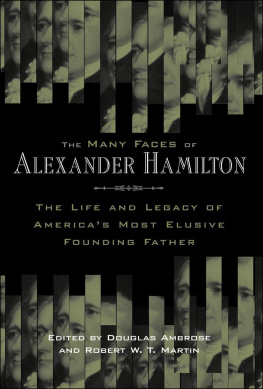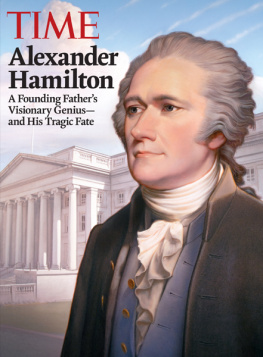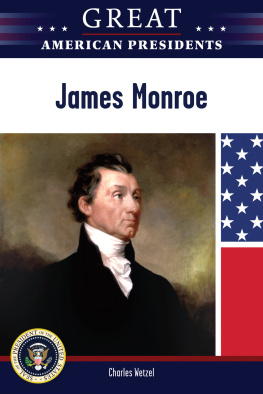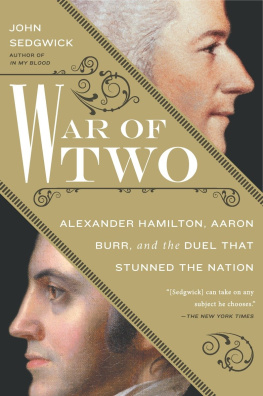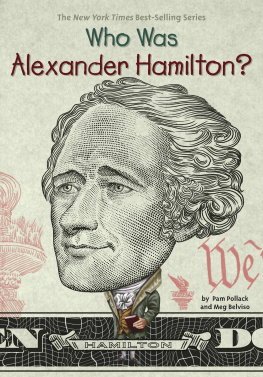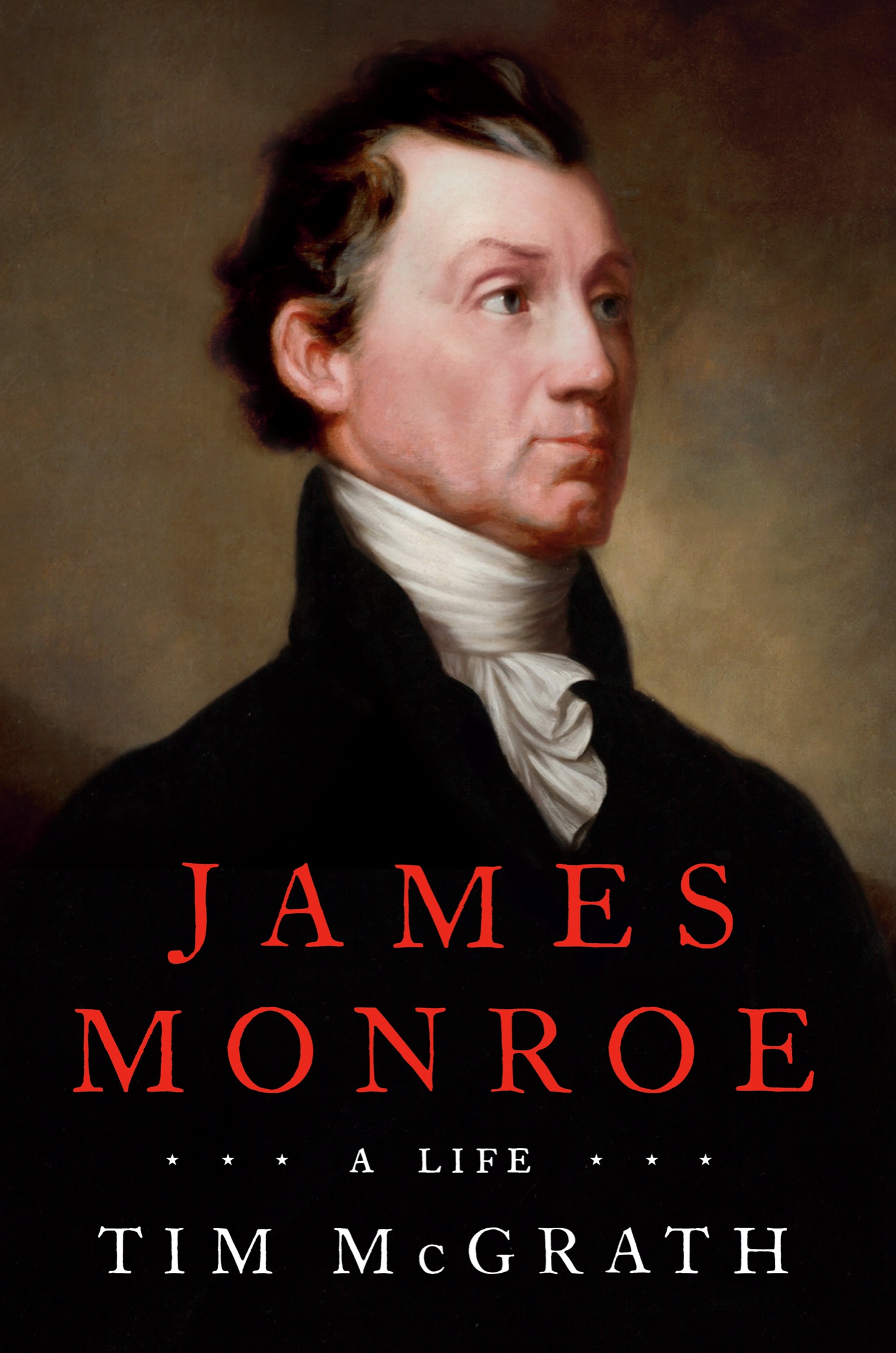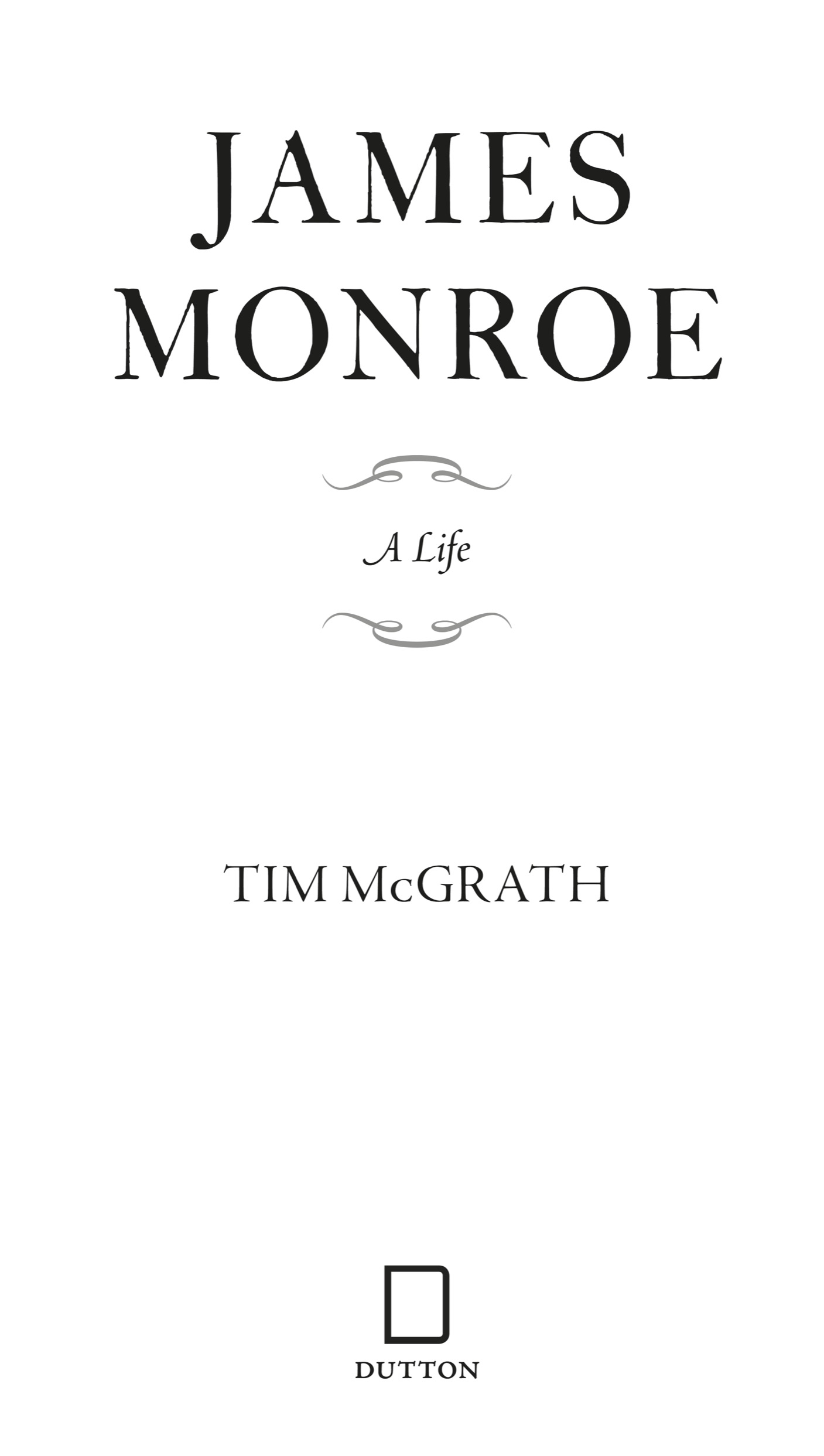A LSO BY T IM M C G RATH
John Barry: An American Hero in the Age of Sail
Give Me a Fast Ship: The Continental Navy and Americas Revolution at Sea

An imprint of Penguin Random House LLC
Penguinrandomhouse.com

Copyright 2020 by Tim McGrath
Map, Battle of Trenton, from George Washingtons Mount Vernon 2014, Mt. Vernon Ladies Association
Penguin supports copyright. Copyright fuels creativity, encourages diverse voices, promotes free speech, and creates a vibrant culture. Thank you for buying an authorized edition of this book and for complying with copyright laws by not reproducing, scanning, or distributing any part of it in any form without permission. You are supporting writers and allowing Penguin to continue to publish books for every reader.
DUTTON and the D colophon are registered trademarks of Penguin Random House LLC.
Library of Congress Cataloging-in-Publication Data
Names: McGrath, Tim, author.
Title: James Monroe : a life / Tim McGrath.
Description: New York : Dutton, 2020. | Includes bibliographical references and index.
Identifiers: LCCN 2019056757 | ISBN 9780451477262 (hardcover) | ISBN 9780698408890 (ebook)
Subjects: LCSH: Monroe, James, 17581831. | PresidentsUnited StatesBiography. | United StatesPolitics and government17831865. | United StatesPolitics and government18171825.
Classification: LCC E372 .M33 2020 | DDC 973.5/4092 [B]dc23
LC record available at https://lccn.loc.gov/2019056757
Most of the cited quotations throughout the text are exactly as transcribed, including colloquialisms, spellings (or misspellings), and contractions. However, in the interest of contemporary readers, liberty has been occasionally taken for the sake of readability.
While the author has made every effort to provide accurate telephone numbers, internet addresses, and other contact information at the time of publication, neither the publisher nor the author assumes any responsibility for errors or for changes that occur after publication. Further, the publisher does not have any control over and does not assume any responsibility for author or third-party websites or their content.
Cover design by Steven Meditz. Portrait of President James Monroe by Samuel FB Morse; oil on canvas, circa 1819. From the White House collection, Washington DC. (Photo by GraphicaArtis/Getty Images)
pid_prh_5.5.0_c0_r1
CONTENTS
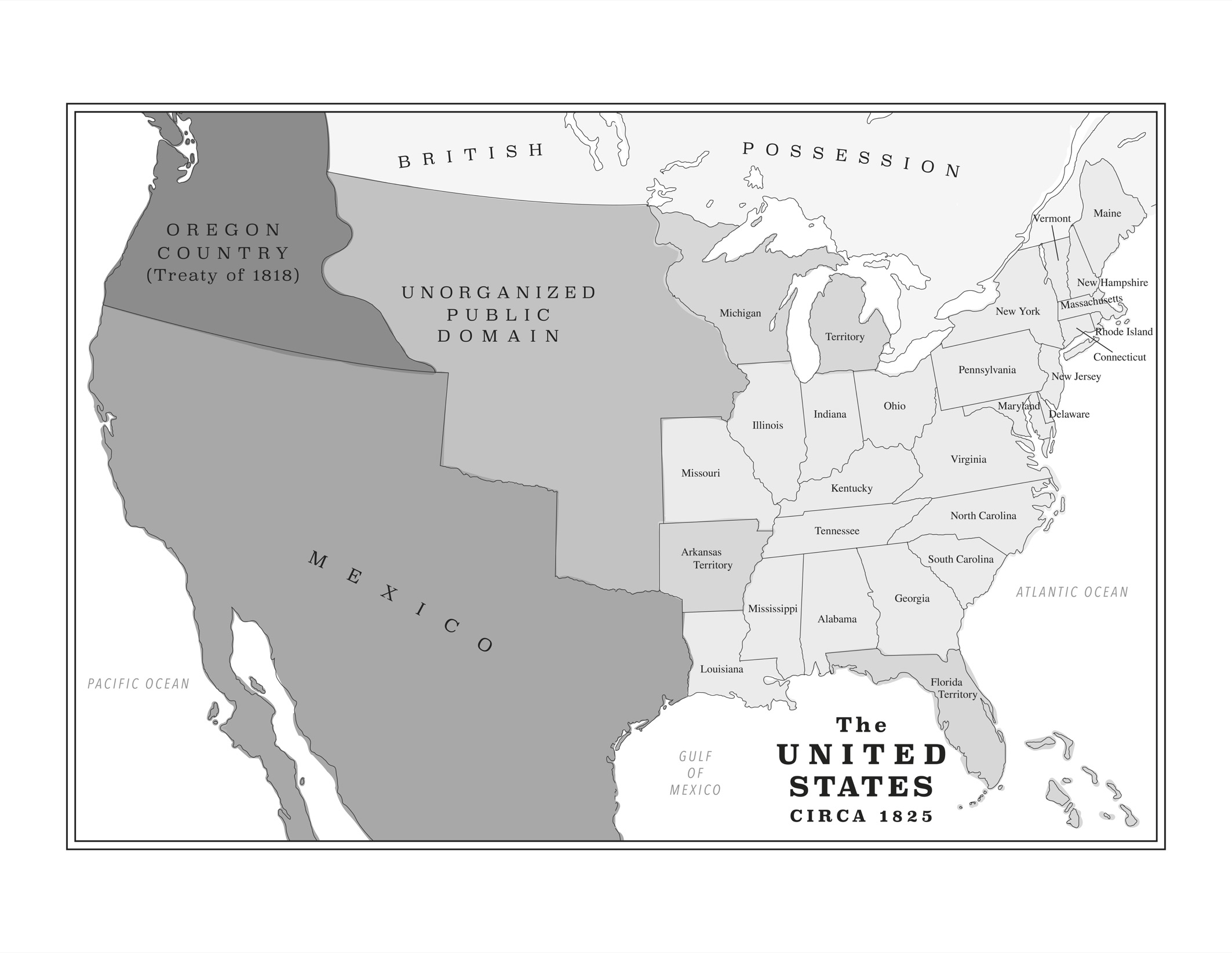
CHAPTER ONE
Rebellious Colonists and Disorderly Collegians
We then rallied and returned to the action.
J AMES M ONROE
Like most land-owning families in colonial Virginia, the Monroes traced their presence in the New World to an Old World adventurer.
In 1314, during the Battle of Bannockburn, when a desperate army of Scotsmen thrashed King Edward IIs forces, winning a brief respite of independence from England, a Munro fought against the tyrant Crown.
By the 1640s, Scottish troops found themselves fighting for the English king, Charles I, not against him, over the expulsion of Presbyterians from Parliament by Oliver Cromwell. At the Battle of Preston in 1648, Charless forces, Captain Andrew Munro among them, were soundly defeated by Cromwells Roundheads, ending the efforts of Charless cavaliers to keep him on the throne. Charles I lost his head and Munro lost his homeland. He returned to the family homestead, Foulis Castle, before departing for the New World.
The exiled Munro somehow obtained a tract of land in the colony of Virginia and found passage on a ship carrying other Scots across the Atlantic. The colonists of Virginia were the precursors of the rugged individualists of American legend. Many, like Munro, were truly exiles; others were sons who sought in the New World the riches that were denied them at home by an older brothers birthright. Munros tract of land was in Westmoreland County along Virginias Northern Neck.
Westmoreland County was home to families whose surnames would be etched in American history: Washington, Madison, and Lee among them. The Washingtons were actually neighbors, as far as the eighteenth century goes, as they lived a short three miles away when baby George was born in 1732 (shortly afterward, the Washingtons moved to King George County).
By 1660, news of Cromwells death and the restoration of the monarchy in the person of Charles II had reached Virginia. Andrew, now spelling his name Monroe, visited Scotland. After convincing some relations to accompany him back to Virginia, he was awarded with another tract of land.
Eleven hundred acres is an empire in the twenty-first century but not so in the eighteenth. The Monroes were well-thought-of, but while they were comfortably situated, they were not well-off. The men in the family were farmers and often plied another trade, lest an agricultural misfortune such as drought prevented them from putting enough food on the table and clothing their family. For Andrew Monroe, son of the first Andrews son, William, that line of work came in public service. For years he served as Westmoreland Countys sheriff. He married his cousins widow, Christine Taylor Monroe, and they had four children. Their second, Spence, was born in 1727.
When his father died, Spence inherited five hundred acres (his older brother got the other six hundred). Like his forebears, he was listed as a planter, in county records but on the middle rungs of the gentry. He frequently worked as a carpenter, a trade he had learned as a youthand he was good at it. When he took on his own apprentice just before his wedding, Spence proudly signed Cabinet maker to the contract. Being a tradesman was not an impediment to being known as a gentleman.
Spence was industrious and ambitious, especially in his choice of a wife. In fact, he married up. Elizabeth Joness father, James, had emigrated from Wales and quickly established his reputation as a successful attorney and a man of property in King George County. The Joneses were comfortably well-off, and Elizabeth had more than her share of suitors. Her family remembered her as particularly well educated for [a woman of] colonial days. When James Jones died, he did something remarkable for his time: He divided his estate between his son, Joseph, a budding attorney, and his daughter. His generosity increased Spence and Elizabeths holdings by three hundred acres.
The home Spence and Elizabeth shared after their marriage reflected his success as a breadwinner. A descendant called it a simple structure within a stones throw of a virgin forest. While nothing lavish, it had two stories, dominated by a large main room on the first floor. Open windows and half doors let any breeze in to fight the summer humidity; chimneys at each end warded off the cold winter winds.
In 1753, Elizabeth gave birth to their first child, a daughter they named Elizabeth, after her mother. Five years passed before the second child and first son, Jamesnamed after Elizabeths fatherwas born, on April 28, 1758.

